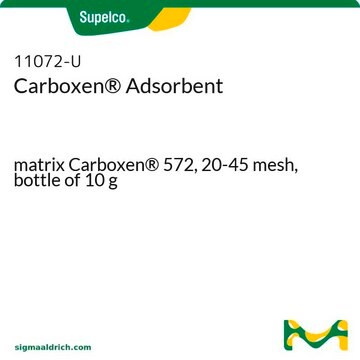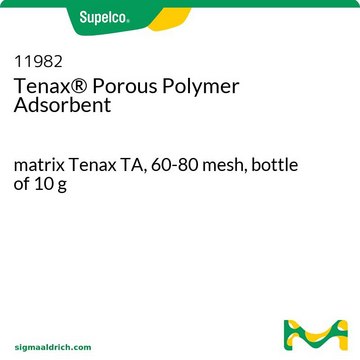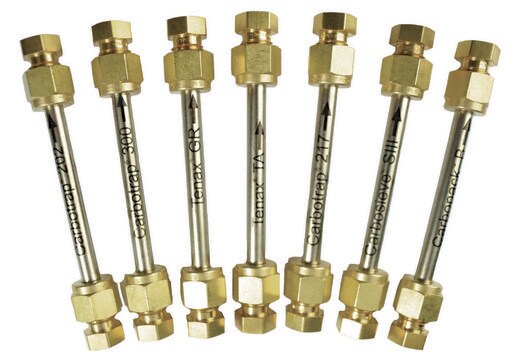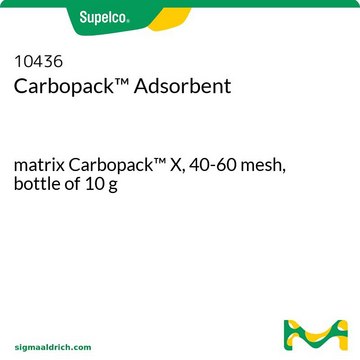10471
Carboxen® Adsorbent
matrix Carboxen® 1003, 40-60 mesh, bottle of 10 g
About This Item
Productos recomendados
product line
Carboxen®
Quality Level
form
powder
packaging
bottle of 10 g
technique(s)
LPLC: suitable
surface area
~1000 m2/g
matrix
Carboxen® 1003
matrix active group
carbon
particle size
40-60 mesh
pore size
~0.26 cm3/g mesoporosity
~0.28 cm3/g macroporosity
~0.38 cm3/g microporosity
~5-8 Å pore diameter
density
~0.49 g/mL (free fall density)
separation technique
reversed phase
General description
Features and Benefits
- Spherical
- Hard (ball pan hardness >98%)
- Stable up to 400°C
- High purity
- Easy to pack
- Stable over entire pH range
- Do not create backpressure
- High osmotic shock stability
- Tapered pore sizing (from macro- to meso- to micro-)
Other Notes
Legal Information
Storage Class
11 - Combustible Solids
wgk_germany
nwg
flash_point_f
Not applicable
flash_point_c
Not applicable
Elija entre una de las versiones más recientes:
Certificados de análisis (COA)
Lo sentimos, en este momento no disponemos de COAs para este producto en línea.
Si necesita más asistencia, póngase en contacto con Atención al cliente
¿Ya tiene este producto?
Encuentre la documentación para los productos que ha comprado recientemente en la Biblioteca de documentos.
Los clientes también vieron
Artículos
Carbon Molecular sieves (CMS) are a versatile range of adsorbents that can be tailored for specific applications. Supelco® scientists have been synthesizing synthetic CMS carbons for several decades, starting from tailoring of the starting polymers/copolymers, to modifying the final properties of the subsequent CMS carbon.
Nuestro equipo de científicos tiene experiencia en todas las áreas de investigación: Ciencias de la vida, Ciencia de los materiales, Síntesis química, Cromatografía, Analítica y muchas otras.
Póngase en contacto con el Servicio técnico









